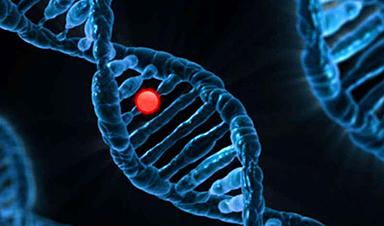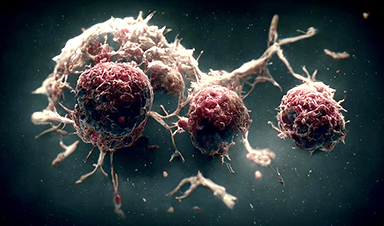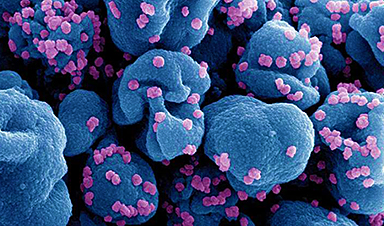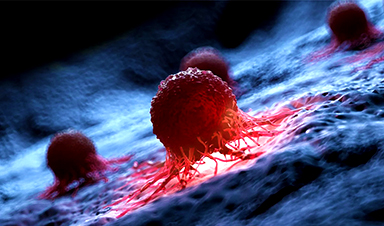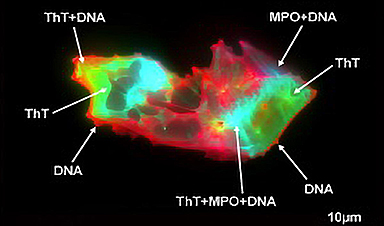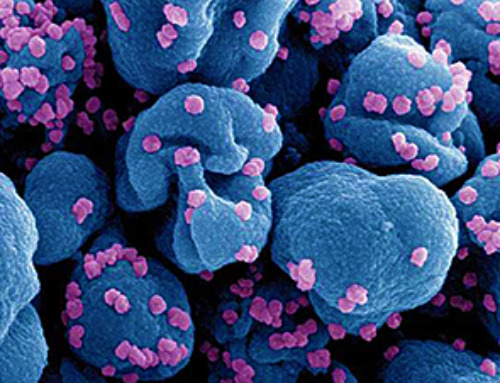Hospital for Sick Children in Toronto researchers are reporting that targeted RNA sequencing can detect clinically actionable alterations in 87% of tumors and provide decisive findings where DNA-seq either fails, returns no variant, or is not informative.
Cancer treatments have seen tremendous improvements in recent years, in part due to highly specific targeting and diagnostic techniques.
DNA-based methods dominate molecular cancer diagnostics but struggle to detect gene fusions and assess splice site consequences. RNA sequencing enables sensitive fusion detection and direct assessment of transcript-level disruption caused by splicing mutations.
In the study, “Clinical utility of targeted RNA sequencing in cancer molecular diagnostics,” published in Nature Medicine, researchers implemented a targeted RNA-seq assay to evaluate 2,310 tumors across central nervous system, solid, and hematopoietic cancers.
Of the 2,310 tumors submitted for analysis, 110 (4.8%) failed quality control, primarily due to insufficient RNA. Among samples meeting quality thresholds, sequencing was successful in 99.6%.
Oncogenic variants were identified in 74% of tumors, with an additional 13% classified as pertinent negatives—bringing total clinical utility to 87%.
Among positive cases, 40% carried single nucleotide variants (SNVs) or indels, 32% fusions, 2.5% other structural variants, and 5% showed multiple classes. Fusions were 1.8 times more common in children, while SNVs were 1.6 times more common in adults.
Among 103 samples with matched DNA sequencing, RNA-seq detected 93.3% of oncogenic variants. Variant allele frequencies between RNA-seq and DNA-seq showed strong correlations.
Among tumors sequenced with diagnostic intent, 37 received new diagnoses, representing 1.9% of evaluable cases. An additional 11 tumors were reclassified based on the presence or absence of diagnostic alterations, bringing the total to 48 revised diagnoses.
Central nervous system tumors accounted for 30 of the 48 revised diagnoses. In 13 cases, RNA-seq reclassified ependymoma as glioma, astroblastoma, or paraganglioma. Seven low-grade gliomas were re-diagnosed as diffuse midline glioma, H3 K27-altered, based on identification of H3K27M mutations.
Five solid tumors were reclassified, including one initially diagnosed as metastatic Wilms tumor, re-identified as clear cell sarcoma of the kidney following detection of a BCOR internal tandem duplication. Another case, previously tested with negative fusion results, was revised to dermatofibrosarcoma protuberans after RNA-seq identified a canonical COL1A1::PDGFB fusion.
Eight tumors were reclassified not by detection of a new alteration but by ruling out expected diagnostic features. In each case, RNA-seq excluded defining molecular markers of the histologic diagnosis, leading to re-evaluation of tumor classification.
In total, 94 of 104 patients considered for targeted therapy received treatment based on RNA-seq findings. MAPK pathway inhibitors, tyrosine kinase inhibitors, and immune checkpoint therapies were most commonly used.
Fusions alone explained oncogenesis in 86% of fusion-driven tumors, many of which lacked additional alterations. RNA-seq succeeded across all tumor types and tissue formats, including degraded FFPE samples.
Researchers conclude that targeted RNA-seq can serve as a stand-alone molecular diagnostic with high yield, minimized cost, and broad clinical applicability.
Written for you by our author Justin Jackson, edited by Sadie Harley, and fact-checked and reviewed by Robert Egan—this article is the result of careful human work. We rely on readers like you to keep independent science journalism alive. If this reporting matters to you, please consider a donation (especially monthly). You’ll get an ad-free account as a thank-you.
More information: Robert Siddaway et al, Clinical utility of targeted RNA sequencing in cancer molecular diagnostics, Nature Medicine (2025). DOI: 10.1038/s41591-025-03848-8
News
Scientists Melt Cancer’s Hidden “Power Hubs” and Stop Tumor Growth
Researchers discovered that in a rare kidney cancer, RNA builds droplet-like hubs that act as growth control centers inside tumor cells. By engineering a molecular switch to dissolve these hubs, they were able to halt cancer [...]
Platelet-inspired nanoparticles could improve treatment of inflammatory diseases
Scientists have developed platelet-inspired nanoparticles that deliver anti-inflammatory drugs directly to brain-computer interface implants, doubling their effectiveness. Scientists have found a way to improve the performance of brain-computer interface (BCI) electrodes by delivering anti-inflammatory drugs directly [...]
After 150 years, a new chapter in cancer therapy is finally beginning
For decades, researchers have been looking for ways to destroy cancer cells in a targeted manner without further weakening the body. But for many patients whose immune system is severely impaired by chemotherapy or radiation, [...]
Older chemical libraries show promise for fighting resistant strains of COVID-19 virus
SARS‑CoV‑2, the virus that causes COVID-19, continues to mutate, with some newer strains becoming less responsive to current antiviral treatments like Paxlovid. Now, University of California San Diego scientists and an international team of [...]
Lower doses of immunotherapy for skin cancer give better results, study suggests
According to a new study, lower doses of approved immunotherapy for malignant melanoma can give better results against tumors, while reducing side effects. This is reported by researchers at Karolinska Institutet in the Journal of the National [...]
Researchers highlight five pathways through which microplastics can harm the brain
Microplastics could be fueling neurodegenerative diseases like Alzheimer's and Parkinson's, with a new study highlighting five ways microplastics can trigger inflammation and damage in the brain. More than 57 million people live with dementia, [...]
Tiny Metal Nanodots Obliterate Cancer Cells While Largely Sparing Healthy Tissue
Scientists have developed tiny metal-oxide particles that push cancer cells past their stress limits while sparing healthy tissue. An international team led by RMIT University has developed tiny particles called nanodots, crafted from a metallic compound, [...]
Gold Nanoclusters Could Supercharge Quantum Computers
Researchers found that gold “super atoms” can behave like the atoms in top-tier quantum systems—only far easier to scale. These tiny clusters can be customized at the molecular level, offering a powerful, tunable foundation [...]
A single shot of HPV vaccine may be enough to fight cervical cancer, study finds
WASHINGTON -- A single HPV vaccination appears just as effective as two doses at preventing the viral infection that causes cervical cancer, researchers reported Wednesday. HPV, or human papillomavirus, is very common and spread [...]
New technique overcomes technological barrier in 3D brain imaging
Scientists at the Swiss Light Source SLS have succeeded in mapping a piece of brain tissue in 3D at unprecedented resolution using X-rays, non-destructively. The breakthrough overcomes a long-standing technological barrier that had limited [...]
Scientists Uncover Hidden Blood Pattern in Long COVID
Researchers found persistent microclot and NET structures in Long COVID blood that may explain long-lasting symptoms. Researchers examining Long COVID have identified a structural connection between circulating microclots and neutrophil extracellular traps (NETs). The [...]
This Cellular Trick Helps Cancer Spread, but Could Also Stop It
Groups of normal cbiells can sense far into their surroundings, helping explain cancer cell migration. Understanding this ability could lead to new ways to limit tumor spread. The tale of the princess and the [...]
New mRNA therapy targets drug-resistant pneumonia
Bacteria that multiply on surfaces are a major headache in health care when they gain a foothold on, for example, implants or in catheters. Researchers at Chalmers University of Technology in Sweden have found [...]
Current Heart Health Guidelines Are Failing To Catch a Deadly Genetic Killer
New research reveals that standard screening misses most people with a common inherited cholesterol disorder. A Mayo Clinic study reports that current genetic screening guidelines overlook most people who have familial hypercholesterolemia, an inherited disorder that [...]
Scientists Identify the Evolutionary “Purpose” of Consciousness
Summary: Researchers at Ruhr University Bochum explore why consciousness evolved and why different species developed it in distinct ways. By comparing humans with birds, they show that complex awareness may arise through different neural architectures yet [...]
Novel mRNA therapy curbs antibiotic-resistant infections in preclinical lung models
Researchers at the Icahn School of Medicine at Mount Sinai and collaborators have reported early success with a novel mRNA-based therapy designed to combat antibiotic-resistant bacteria. The findings, published in Nature Biotechnology, show that in [...]
